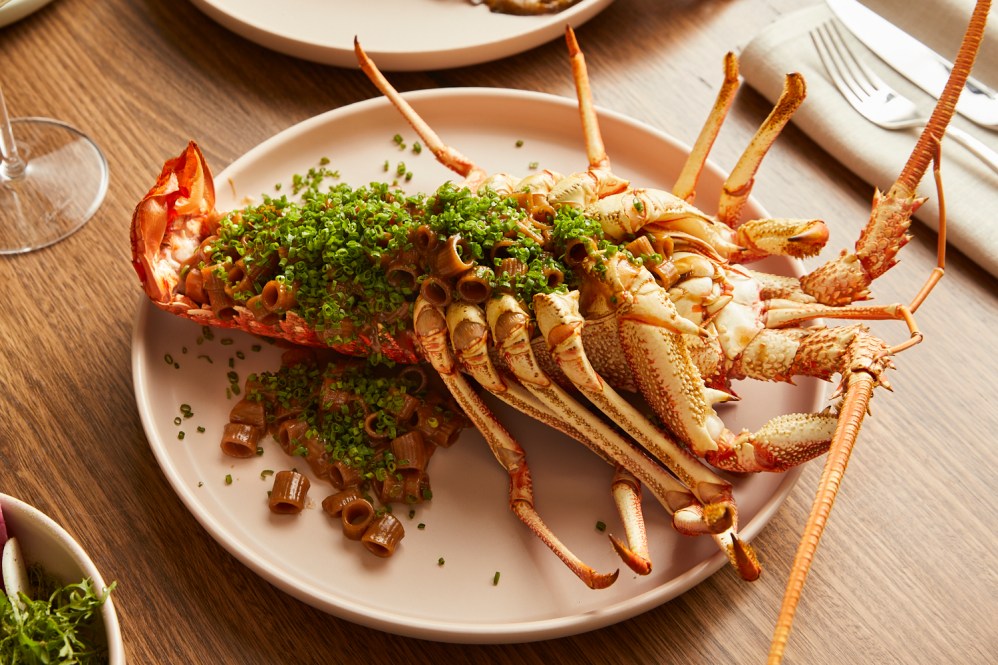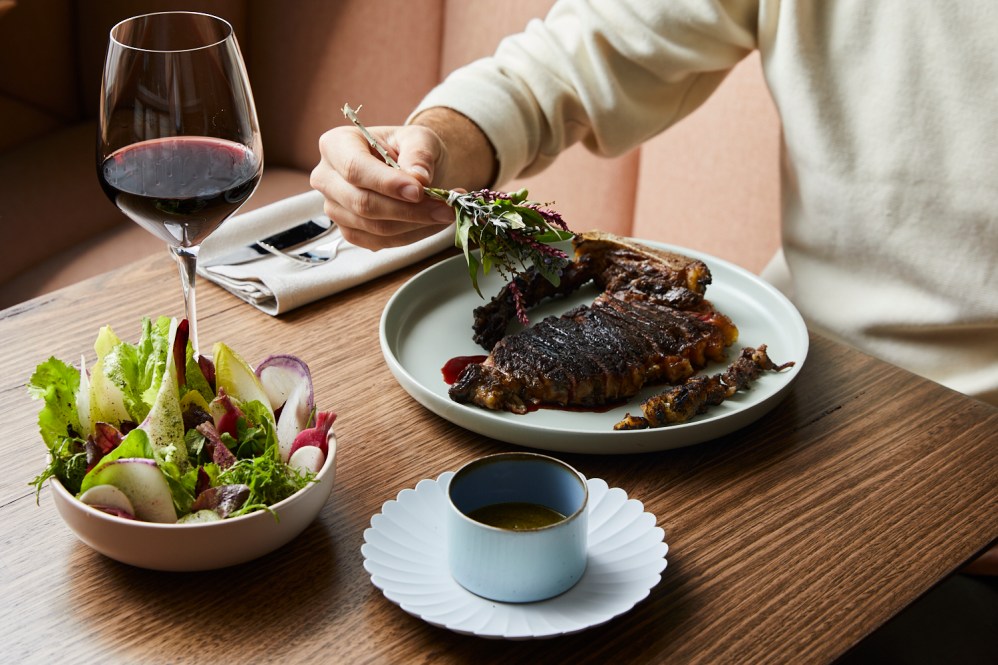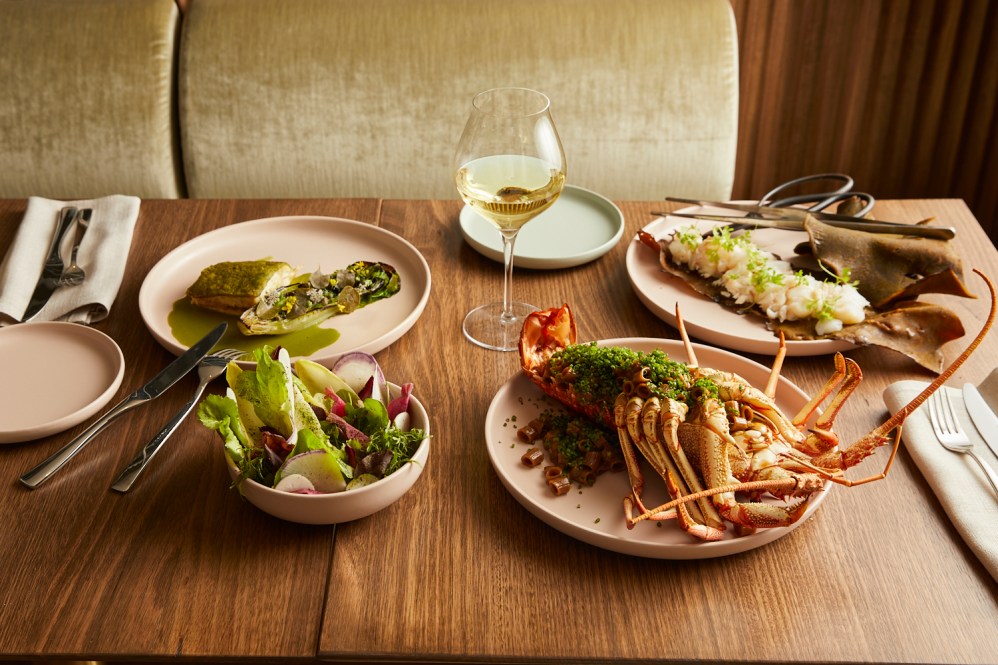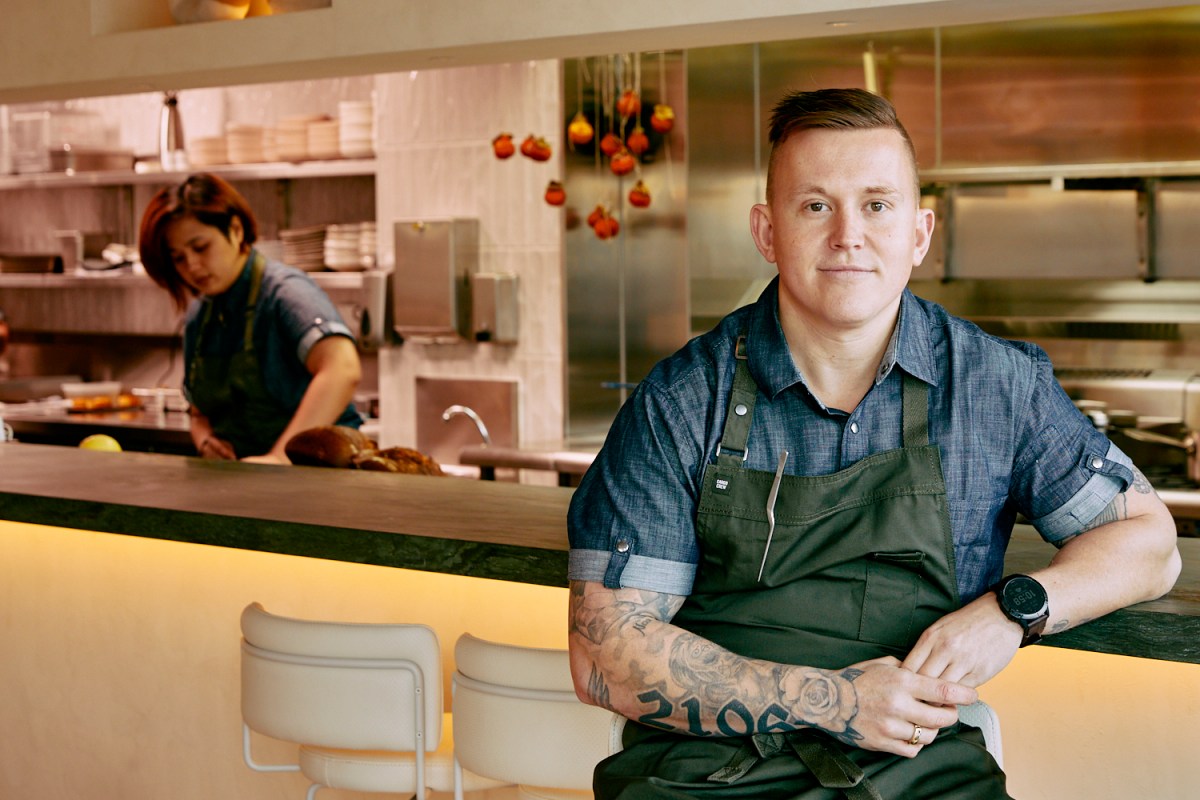Elijah Holland’s name is perhaps most recognisable from his time as head forager of Noma Australia, which saw René Redzepi headhunt the chef to scope out local gems for the pop-up. The role no doubt cemented Holland’s name in the culinary world, and it’s been a rapid ascent ever since. He’s opened restaurants across China, trawled jungles and mountains for native ingredients and is now at the helm of a new concept influenced by its historic surroundings in Melbourne.
Holland speaks to Hospitality about his time working in China, why foraging was never a passing trend for him and paying homage to provenance on the plate. 2016 was a big year for Elijah Holland. It not only saw the chef work alongside one of the world’s most acclaimed culinary figures (René Redzepi), but marked the start of a new chapter — a move to China, in this case.
Holland was offered an executive chef position at The Locksmith, an Australian-influenced restaurant in Foshan Lingnan Tiandi in the Guangdong Province. The project was backed by partners — including the owner of Melbourne fine diner Lûmé. “I had never been to China before and I love a good challenge,” says Holland. “I opened The Locksmith, which was a three-level venue, and I spent one and a half years there.”
It’s easy to understand the appeal of moving to a new country to a chef like Holland. China’s diverse food landscape provided endless opportunities to Holland to discover and work with ingredients he’d never seen before. “I did a lot of foraging and we used plenty of wild food,” says the chef. “We made donkey prosciutto, camel and goose salami and goat ham.”
Holland later went on to join the Oysterlicious group and opened nine restaurants across the country from Beijing and Shanghai to the south of China, with the chef learning Mandarin along the way. He also headed up experiential fine diner Botanik, which was booked out four months in advance at its peak. “We did anywhere from 16–24 courses and seated 20 diners at a time,” he says. “The menu used produce from all around China from salts to oils and chocolate. Everything was cooked over a wood-fired oven, an open hearth or a wind-up charcoal grill.”

The chef’s discovery of local produce was constant during his time in the country, with foraging trips and producers offering a glimpse into the sheer magnitude of Chinese native ingredients. “I would get fresh goji berries the size of raspberries and wild honey from Yunnan that came in a bag on a stick with bees still in it,” says Holland (who broke open the honeycomb to let the bees go).
“I would make my own chocolate from cacao pods from Hainan and order sprouting coconuts. The local food scene is incredible. I had some of the best meals in remote towns and villages and I explored jungles and different regions all over China, but I missed Australia, so I decided to come back.”
The chef returned to Melbourne after three years abroad and took a well-earned break, which saw him dive, surf and do some four-wheel driving, too. “I caught up with some different people and was offered the opportunity to take over Lûmé in January 2020,” says Holland.
Not one to shy away from a hurdle or two, the chef switched up the fine diner completely. “I changed the whole menu and team in a month,” he says. “There were two menus of 12–14 courses, one of which was a vegan plant-based version.”
After calling time at Lûmé earlier this year, Holland was ready to take on a fresh challenge: fronting a new restaurant. The chef was approached by Sweet & Chilli Managing Director Cameron Northway to spearhead the culinary offering at LOTI (Lady of the Ice) in St Kilda. “He had an idea and a vision, and we basically worked together to make it happen,” says the chef. “We are right on the coast, so the food is inspired by Europe and is based around the idea of ‘Mediterranean made in Melbourne’.”

Putting local ingredients front and centre is integral for most restaurants, but Holland and the LOTI team take a hands-on approach to the notion. The chef grew up foraging and it has remained at the core of his culinary ethos, as seen on the whiteboard found in the kitchen. The board is split into seafood, dairy, dry goods, vegetables, meat and foraging — which has the longest list of ingredients by far.
It’s safe to say foraging is steadfast, not short-lived for the chef. “It has been one of those things where it became a trend and some people might have found saltbush or nasturtiums and called it foraging,” he says. “But I think they realised it’s a lot of work to see it, know it and understand it. It’s easy to pick the wrong things and it does take dedication to keep doing it. It’s always something I have been in and around.”
LOTI’s team venture out of the kitchen at least two times a week, travelling all over Victoria to Phillip Island, the Yarra Valley, the Snowy Mountains, Portland and beyond. Holland says the restaurant collects around 40 ingredients to use across the menu including coastal daisy bush, cabbage flowers, beach mustard, sea parsley, sea lettuce, bull kelp, native mint bush, mountain pepper “and the list goes on — that’s just a small amount”.
The trips are an exercise in education and good management — basically, it’s win-win for everyone. Chefs can seek inspiration beyond four walls and try ingredients that aren’t readily available, let alone up for sale. “There are a lot of ingredients they see for the first time,” says Holland.
“I organise foraging trips for us as well as other activities such as spearfishing or visiting farms. It’s important to make sure we are learning and doing new things. I don’t want them to be like, ‘I have to go to work’ and it’s a duty. If we can make it more fun, it’s better for staff retention and there’s more interest from the team.”

When the country’s your pantry, the limits are endless when it comes to creating dishes. LOTI’s menu is split into starters, share plates, mains, sides and desserts — but each dish is linked together by an overarching theme. “The menu incorporates wild ingredients in a way that’s approachable and easy for people to understand,” says Holland.
“Everything on the menu is sourced from within Australia and predominantly Victoria, so really encompassing produce from in and around the coast. I get inspiration from nature. When you’re out there, it tells you the story of how to put things together. It makes sense to put turbot with coastal plants or seaweed. For me, it’s about constantly doing different takes on ingredients where people go, ‘F**k, that’s delicious — I can eat so much of that’.”
Plates not only hero local ingredients, but pay tribute to the historic roots of St. Moritz where the restaurant is located, which was known for its ice rink. A red emperor ceviche is teamed with native citrus and hand-picked Pyrenees olives. “It comes out with a frozen disc you crack and is a fun play on the rink,” says Holland, who also tips a ‘cornetto’ stuffed with smoked yellowfin tuna mousse and albacore tuna mojama as one of the most popular bites so far.
Most of the plates are designed to share, with larger options of BBQ turbot ribs with sea parsley, grilled lettuce and capers along with free-range barley-fed beef with salsify horseradish proving to be hits. The dishes will also morph according to ingredient availability, with the kitchen committed to using the best of the best.
“We change oysters daily or weekly and we swap out botanicals or proteins as the seasons change. I’m about to launch an Australian fruit serving with different fruits sourced from around the country served in pure forms. We might take the fruit out and turn it into a sorbet or jelly or serve it raw brushed with kombucha or a fruit paste.”
LOTI has been open for just over two months now, and the team has gelled together to create something special. “We’re fresh as,” says Holland, “but one of the greatest things is the team. I am working with an incredible group of staff who really love what they do, and it comes across in the symbiosis of how well we work together.”

